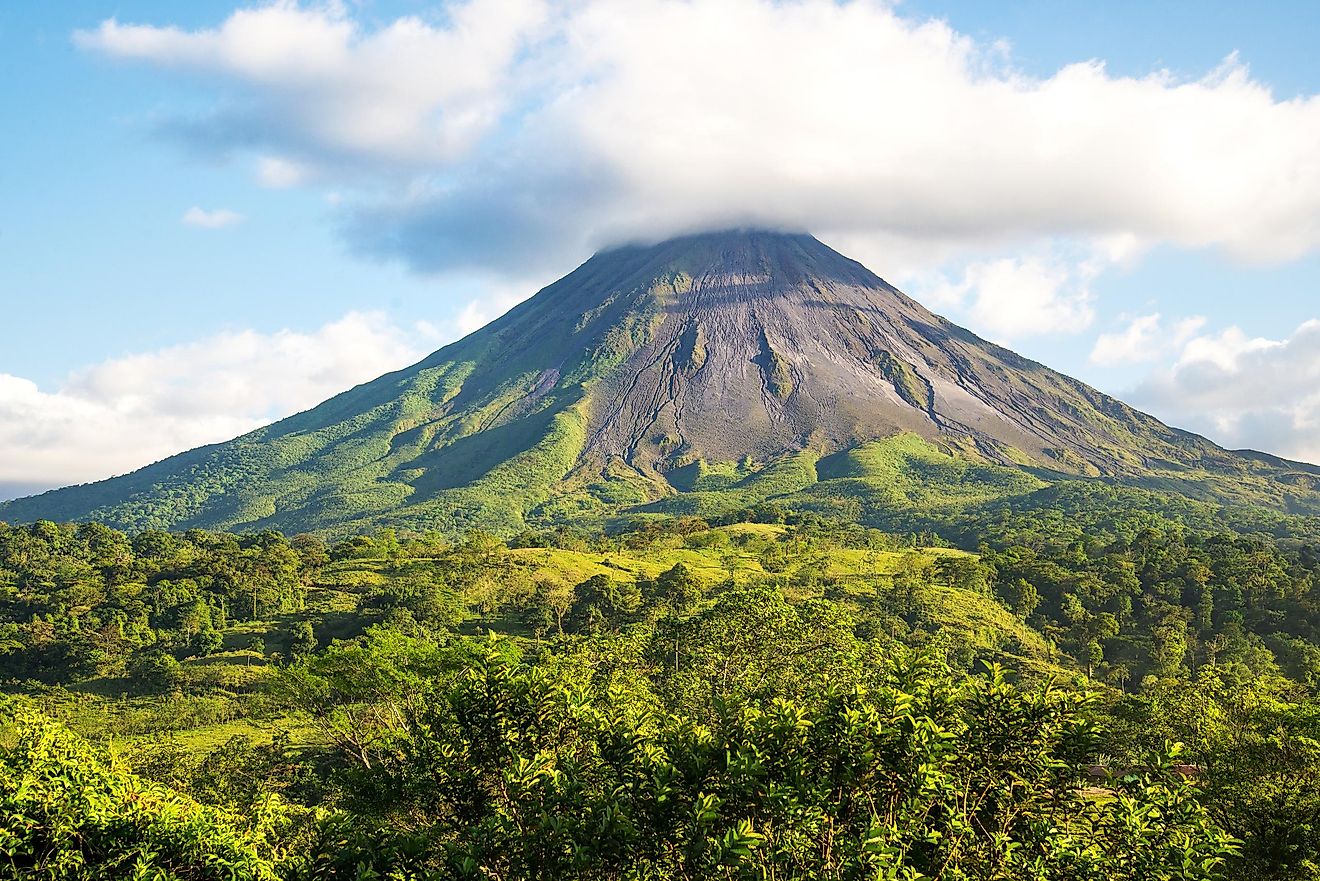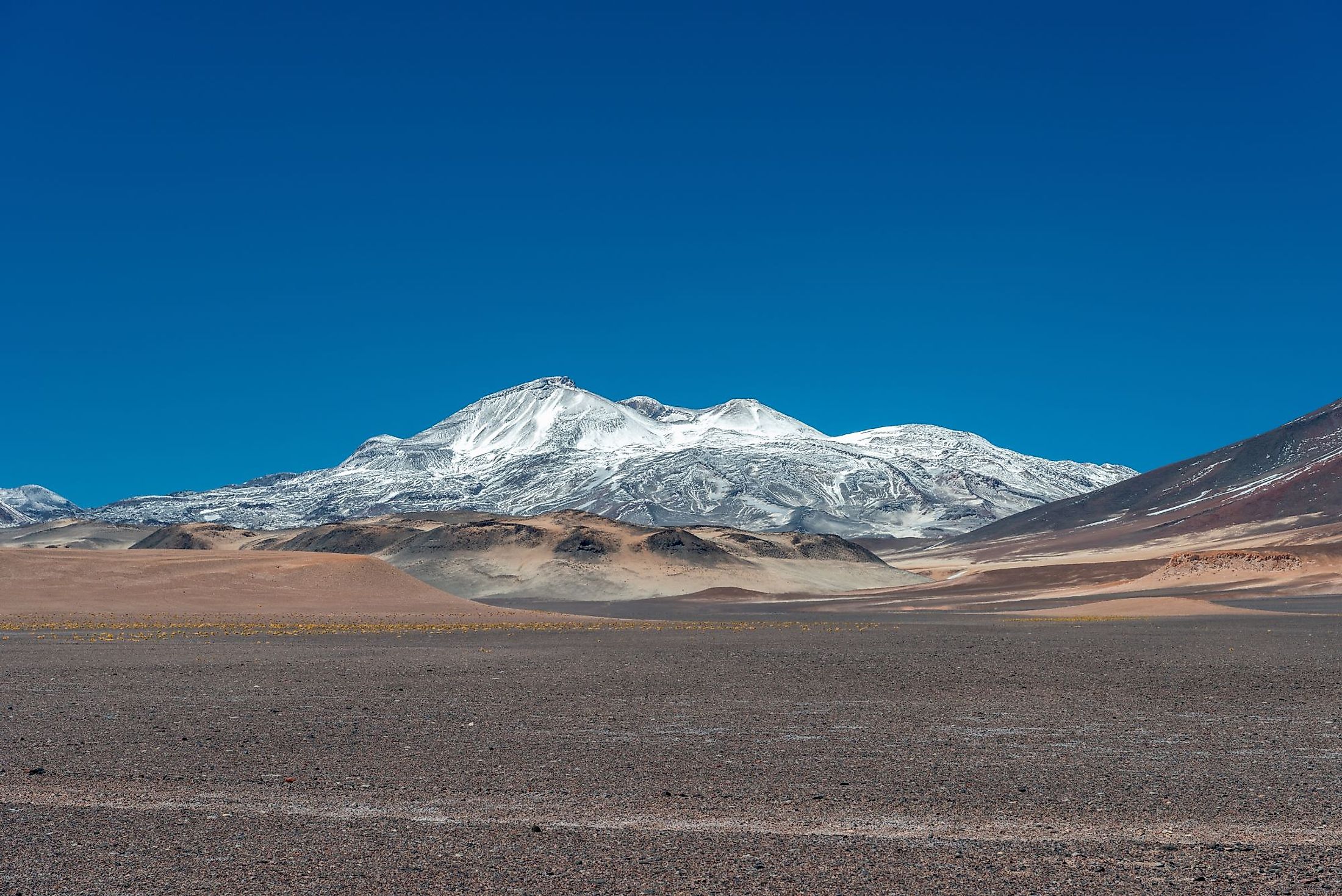
Ojos del Salado
Nevado Ojos del Salado is the world’s highest active stratovolcano. It is located in the Andes Mountain Range on the boundary between Chile and Argentina and is included in the Nevado de Tres Cruces National Park, about 290 kilometers away from the town of Copiapo of the Chilean Atacama region and 600 kilometers of Mount Aconcagua - the highest mountain in the Western Hemisphere. Nevado Ojos del Salado is also the highest mountain in Chile and the second-highest mountain in the Southern Hemisphere and Western Hemisphere, with a staggering height of 6,893m. The mountain has two summits of minimal elevation difference, one of which is located in Argentina and the other is located in Chile. Remarkably, Ojos Del Salado has the highest lake in the world, which is located at 6,390m high on its eastern side. This crater lake is about 100 meters in diameter and it exists all year round. One of the significant characteristics of this mountain is the large deposits of salt on its glaciers, which also leads to the formation of saltwater pools on the slopes of the mountain. The mountain’s climate is rather dry due to its proximity to the Atacama Desert that is situated to the west of the Andes Mountain. Nevertheless, the peak is covered in snow mainly during winter. Ojos Del Salado is also a popular hiking destination given its easy trail, except the last stretch before the summit which requires equipment. Jan Alfred Szczepanski and Justyn Wojsznis were the first to complete an ascent on Ojos Del Salado in 1937.
Etymology
Ojos Del Salado is Spanish for “Eyes of Salt” or “Eyes of the Salty One” which is derived from the salt flats and lagoons found on the slopes of the mountain. Another possible translation could be “Sources of the Salty River” because the Latin American version of the word “Ojo” means source of a river.
Geology
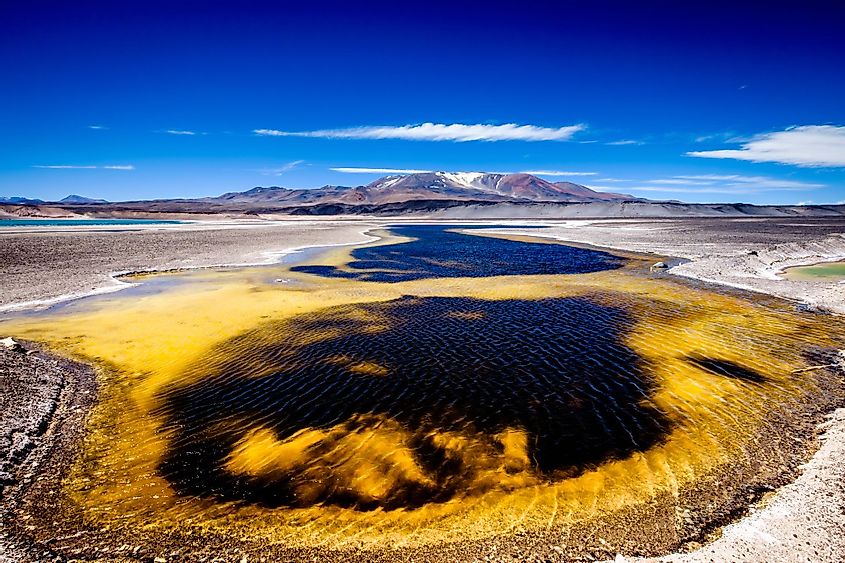
Ojos Del Salado is located on the southern end of the Andes Central Volcanic Zone, along with other high volcanoes such as El Solo and Nevado Incahuasi. It is estimated that the region exhibited volcanic activity around 26 million years ago, particularly in the Claudio Gay Mountain Range and the Maricunga Belt. Volcanic activity shifted to the Ojos Del Salado region when local subduction of the Nazca Plate under the South America Plate was getting shallower about 18 million years ago.
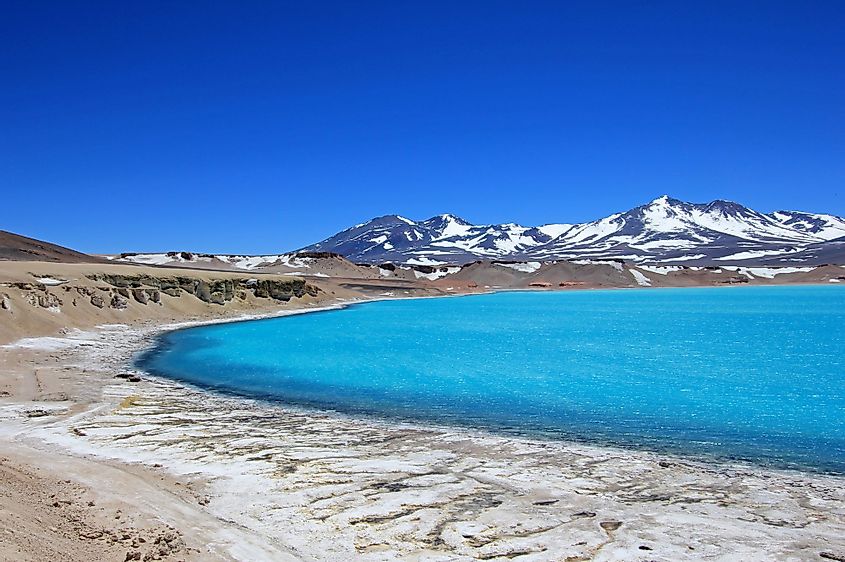
The Ojos Del Salado mountain is composed of a complex of lava flows and lava domes. The volcano’s lavas are rich in hornblende, biotite, plagioclase, opaques in addition to low levels of quartz, augite, and hypersthene. It is estimated that the volcano last erupted between 1,000 and 1,500 years ago but there is also evidence of ejected ash around 1993 in addition to the presence of fumaroles on top of the mountain and some detected lava flows. These indications are further proof that the volcano is active. While some reports argue that there are no glaciers on Ojos Del Salado, glaciers are found in the crater in a penitentes form.
Recreation
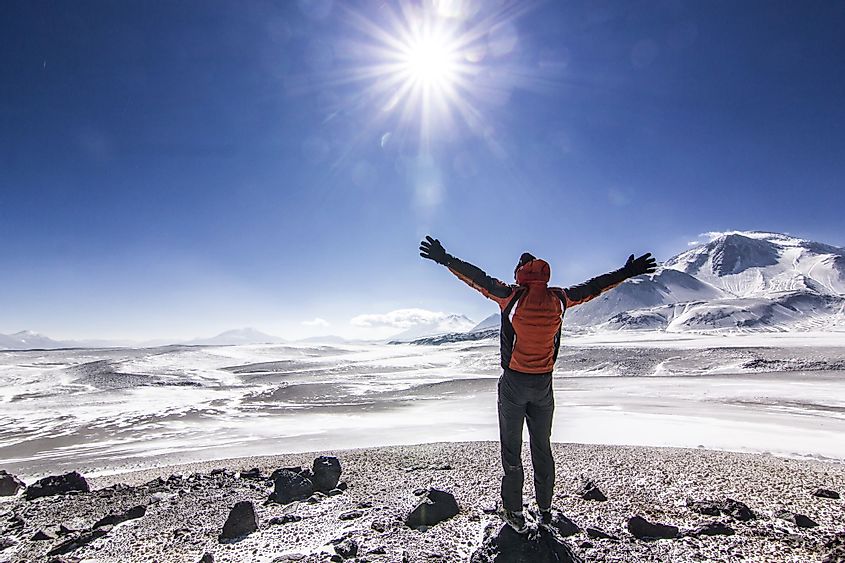
The mountain is a popular hiking spot due to its accessible and easy climb, except the final route to the summit which requires climbing ropes. The final route to the summit also exhibits strong winds, making the final climb more challenging. Interestingly, the mountain is sometimes referred to as bicultural or half Chilean and half Argentinean for its location on the border. Nevertheless, the route to the summit can be accessed either from Argentina or Chile. The best period to climb the mountain is when there is minimal snow, usually from December to late March since it’s considered to be the warmest period of the Southern Hemisphere.
